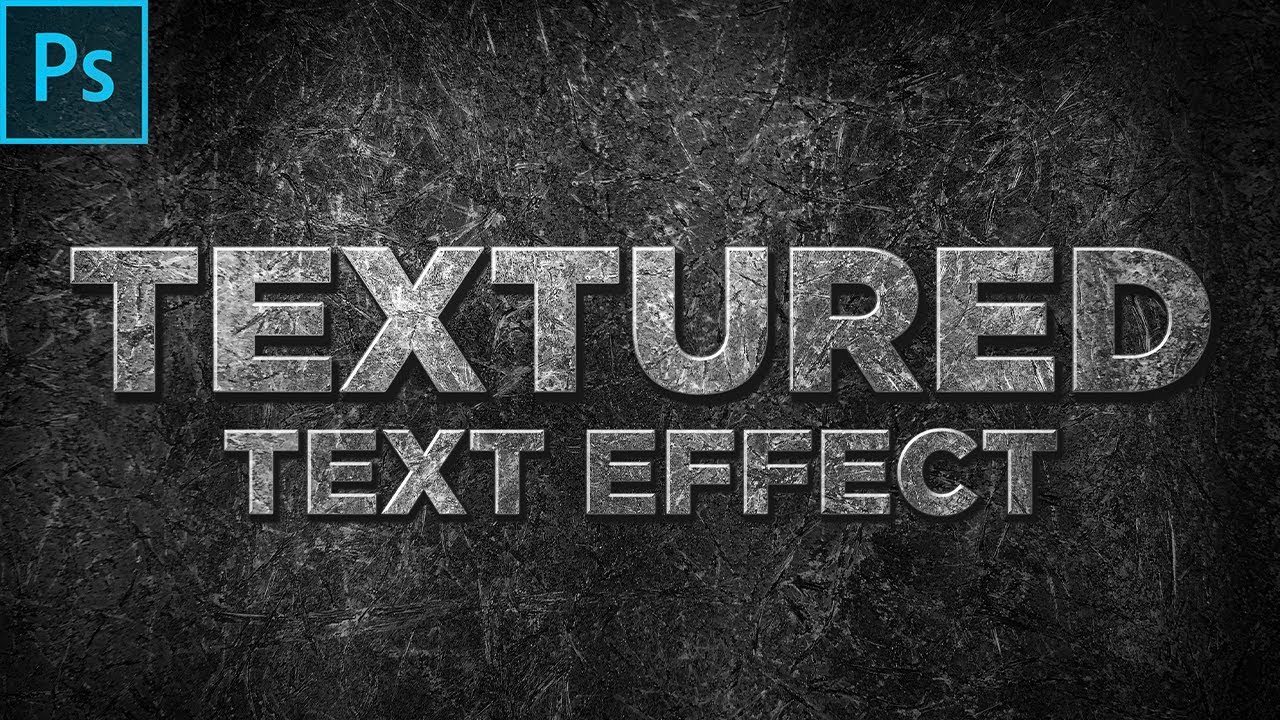Crafting Dimension: A Comprehensive Guide to Creating a 3D Textured Text Effect in Photoshop

Introduction:
In the realm of digital design, the marriage of text and dimensionality opens up a realm of creative possibilities. One captivating technique that brings typography to life is the creation of a 3D textured text effect. In this extensive guide, we will embark on a journey through Adobe Photoshop, exploring step-by-step instructions to craft a mesmerizing 3D textured text effect that adds depth, realism, and tactile richness to your design.
Section 1: Unveiling the Power of 3D Text Effects
Subsection 1.1: The Visual Impact of 3D Typography
Delve into the visual impact of 3D typography, discussing how dimensional elements elevate text from a static entity to a dynamic and engaging visual component. Explore the versatility of 3D text effects in diverse design contexts, from advertising to digital art.
Subsection 1.2: The Allure of Textures
Examine the allure of textures in design, exploring how they enhance the visual and tactile appeal of elements. Discuss the role of textures in creating a sense of realism, uniqueness, and added interest to 3D text.
Section 2: Tools of the Dimensional Trade
Subsection 2.1: Adobe Photoshop Setup
Guide users through the setup process in Adobe Photoshop, ensuring that the software is ready for creating the 3D textured text effect. Discuss the importance of resolution, canvas size, and other preliminary considerations.
Subsection 2.2: Texture Resources and Brushes
Introduce essential resources for textures and brushes that will be utilized in the creation process. Discuss the significance of high-quality textures and brushes to add depth and variety to the 3D text effect.
Section 3: Laying the Groundwork – Text and Fonts
Subsection 3.1: Choosing a Suitable Font
Explore the significance of font choice in 3D text effects. Discuss how selecting a font with clear lines and distinct shapes enhances the legibility and impact of the 3D effect.
Subsection 3.2: Typography Adjustments
Guide users through necessary typography adjustments, such as character spacing, kerning, and font size. Emphasize the importance of achieving a balanced and visually appealing text layout.
Section 4: Adding Dimension with Layer Styles
Subsection 4.1: Creating the Base Text Layer
Walk users through the process of creating the base text layer. Discuss the use of a solid color or gradient background to set the stage for the 3D effect.
Subsection 4.2: Applying Bevel and Emboss
Explore the application of bevel and emboss layer styles to the text. Discuss how adjusting settings such as depth, size, and shadow modes creates the illusion of depth and dimensionality.
Section 5: Infusing Textures for Tactile Realism
Subsection 5.1: Importing Texture Resources
Guide users in importing texture resources into the Photoshop document. Discuss the selection of textures based on the desired visual effect and overall theme of the design.
Subsection 5.2: Blending Modes and Opacity
Explore the use of blending modes and opacity adjustments to seamlessly integrate textures with the 3D text. Discuss how experimenting with different modes and opacities adds subtlety and depth to the overall effect.
Section 6: Lighting for Realistic Shadows and Highlights
Subsection 6.1: Creating a Light Source
Guide users in establishing a virtual light source for the 3D text. Discuss how the direction, intensity, and angle of the light source impact the casting of shadows and highlights.
Subsection 6.2: Shadow and Highlight Adjustments
Explore techniques for adjusting shadows and highlights to align with the established light source. Discuss the use of layer styles, opacity, and color adjustments to achieve realistic shading.
Section 7: Enhancing Details with Brushes and Overlays
Subsection 7.1: Brush Tool for Details
Introduce the Brush tool for adding finer details and accents to the 3D textured text. Discuss the use of brushes to highlight specific areas, create texture variations, and refine the overall appearance.
Subsection 7.2: Overlaying Additional Textures
Explore the technique of overlaying additional textures onto the 3D text. Discuss how layering textures can add complexity, richness, and a tactile quality to the design.
Section 8: Fine-Tuning and Refining the Effect
Subsection 8.1: Color Adjustments
Discuss the importance of color adjustments in fine-tuning the 3D textured text effect. Explore techniques such as hue/saturation, color balance, and gradient maps to achieve the desired color scheme.
Subsection 8.2: Adding Depth of Field
Guide users in adding a depth of field effect to the design. Discuss the use of blur and focus adjustments to simulate a realistic focal point, enhancing the overall sense of depth.
Section 9: Exporting and Showcasing the Masterpiece
Subsection 9.1: High-Quality Rendering
Highlight the significance of high-quality rendering for showcasing the 3D textured text effect. Discuss considerations such as resolution, file formats, and exporting options.
Subsection 9.2: Presentation and Sharing
Guide users in presenting and sharing their 3D textured text masterpiece. Discuss the use of mockups, digital platforms, and social media to showcase the design and receive feedback.
Conclusion:
Creating a 3D textured text effect in Photoshop is a journey that seamlessly blends technical expertise with creative intuition. By following this comprehensive guide, designers can breathe life into their typography, transforming it into a dynamic and visually arresting element. From font selection to lighting adjustments, each step contributes to the intricate dance of dimension and texture, resulting in a masterpiece that resonates with depth and tactile richness. Whether used in digital art, branding, or various design projects, the 3D textured text effect stands as a testament to the designer’s ability to elevate visual communication to new heights.







